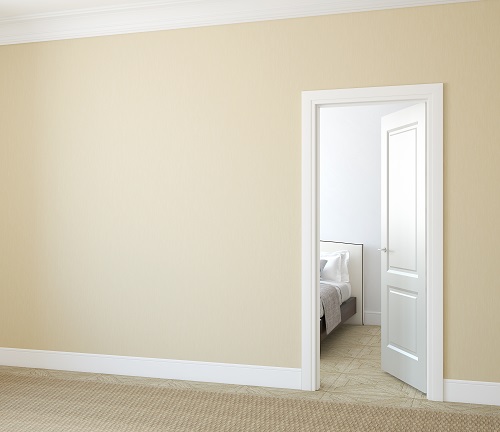 The problem with convection-based heaters is how easily their warmth can be lost through open doors and windows. I’ve lost count of how many times I’ve had to say ‘shut that door’ during the evening, desperate not to lose the heat from my cosy living room to the chilly hallway that lies beyond. Thankfully, this problem doesn’t apply to infrared – one of its key benefits is that it’s unaffected by air movement, meaning any accumulated warmth won’t be carried away the moment you go into the kitchen to make a pot of tea. Though it’s an established fact that radiation travels through the air rather than heating it, you may occasionally see a line of text in some product descriptions that reads ‘the heated area of this product will be reduced if it is installed in an exposed or draughty location’ – or something similar. This can be quite confusing for customers who are unfamiliar with infrared. If radiation is unaffected by the surrounding air, surely it doesn’t matter where you place an infrared heater? To answer this question properly, we have to shift perspective: instead of asking ‘is infrared affected by air movement’, it’s more appropriate to look at how air movement affects our bodies and how that can affect our perception of temperature.
The problem with convection-based heaters is how easily their warmth can be lost through open doors and windows. I’ve lost count of how many times I’ve had to say ‘shut that door’ during the evening, desperate not to lose the heat from my cosy living room to the chilly hallway that lies beyond. Thankfully, this problem doesn’t apply to infrared – one of its key benefits is that it’s unaffected by air movement, meaning any accumulated warmth won’t be carried away the moment you go into the kitchen to make a pot of tea. Though it’s an established fact that radiation travels through the air rather than heating it, you may occasionally see a line of text in some product descriptions that reads ‘the heated area of this product will be reduced if it is installed in an exposed or draughty location’ – or something similar. This can be quite confusing for customers who are unfamiliar with infrared. If radiation is unaffected by the surrounding air, surely it doesn’t matter where you place an infrared heater? To answer this question properly, we have to shift perspective: instead of asking ‘is infrared affected by air movement’, it’s more appropriate to look at how air movement affects our bodies and how that can affect our perception of temperature.
How Wind Chill Affects Human Bodies
Wind chill is a phenomenon we’re all intimately familiar with in the UK, especially during the colder winter months when the jet stream moves south, exposing us to harsh weather that blows in across the Atlantic. Though wind chill affects us all, it may come as a surprise that there is no internationally agreed standard measurement. This is partly because each of us reacts differently to the cold – where one person might need a coat and scarf, the hardier amongst us may still be fine wearing a long sleeve top. Another reason it’s hard to calculate wind chill is because it’s not down to one single factor. Cold air can affect our bodies in a variety of ways:
Evaporation of Moisture
 Chapped lips and dry skin are common complaints of the winter season but have you ever wondered why this might be? It’s all down to the lack of humidity in the air during the colder months, which dries out our skin and is made even worse by the windy weather. Harsh gusts and breezes will quickly strip away the outermost layer of moisture from our skin, causing it to dry out more quickly and remove heat from our bodies.
Chapped lips and dry skin are common complaints of the winter season but have you ever wondered why this might be? It’s all down to the lack of humidity in the air during the colder months, which dries out our skin and is made even worse by the windy weather. Harsh gusts and breezes will quickly strip away the outermost layer of moisture from our skin, causing it to dry out more quickly and remove heat from our bodies.
Movement of Air Near Our Skin
Air movement also plays a large part in how we feel temperature. During a still day, our bodies will warm the air closest to our skin, which acts as a buffer against cooler temperatures. If a sudden gust rushes past, this layer of warm air will be snatched away, making our skin suddenly feel a lot cooler.
Loss of Radiant Heat from the Body
All humans give off body heat in the form of far infrared and the loss of this warmth can compound the sensation of wind chill further. When our skin temperature drops too low, our physical response is to generate more heat by shivering to bring us back up to an acceptable temperature. However, as this is a last-ditch attempt to warm up the body quickly, it’s possible to lose even more heat in the process if we fail to take any additional measures to bring our body temperature back to acceptable levels. Usually this means putting on more clothes or going indoors to get out of the cold.
Wind Chill and Infrared
Gentler forms of infrared, such as longwave or far infrared, take longer to be absorbed by the skin, so products that produce this type of radiation require care when it comes to selecting an installation location. Infrared radiation can’t be blown away by the wind but a brisk gust can chill our skin down at a quicker rate than it absorbs radiant heat. Wind chill tends to be less of an issue with infrared panels because we’re more likely to take action if we sense an unwanted draught coming into our home. For commercial and industrial locations, this can be more of a problem because of the increased amount of through traffic experienced in these locations.
Infrared Heaters in Commercial Locations
 Heaters that use longwave infrared, like ceramic heaters, can suffer from a poor installation location. If they’re positioned near roller shutters or close to large doorways, it’s harder for their heat to be felt. To get the most out of ceramic heaters, they’re best positioned in areas with less air movement otherwise their effective area can be reduced by up to a half. It’s also important to note whether any doors or windows are left open for long periods of time in the space you wish to heat. In the case of roller shutters for loading bays, this is often unavoidable, so to offset the sensation of wind chill it’s recommended to install heaters at a lower height to compensate, or use multiple heaters to ensure the space is well covered. Just make sure that the installation height still complies with manufacturer guidelines!
Heaters that use longwave infrared, like ceramic heaters, can suffer from a poor installation location. If they’re positioned near roller shutters or close to large doorways, it’s harder for their heat to be felt. To get the most out of ceramic heaters, they’re best positioned in areas with less air movement otherwise their effective area can be reduced by up to a half. It’s also important to note whether any doors or windows are left open for long periods of time in the space you wish to heat. In the case of roller shutters for loading bays, this is often unavoidable, so to offset the sensation of wind chill it’s recommended to install heaters at a lower height to compensate, or use multiple heaters to ensure the space is well covered. Just make sure that the installation height still complies with manufacturer guidelines!
Radiant heaters that use near infrared, such as quartz heaters, don’t have any issues with positioning because their intense heat can be felt even in brisk outdoor weather. The only issue with these products is that the type of radiant heat they produce is inclined toward this very specific application. Outdoor electric heaters are great for instant heat; however, their vigorous warmth isn’t suitable for long-term use because near infrared isn’t as easily absorbed by the body and will only heat the skin’s surface. A quartz heater is perfectly fine for occasional use outdoors but you’ll find it’s not suitable for everyday comfort heating.
Getting the Most Out of Infrared Heaters
To summarise, radiant heat might feel like it’s affected by air movement sometimes, but in reality, it’s just our bodies responding to sudden exposure to cold air. The infrared heat is still there but it takes us a little longer to absorb it, which is why we can perceive it as working less effectively. Air movement will most likely not cause any problems for domestic installations but it should definitely be taken into account within large commercial environments where persistent draughts are an issue. If you’re ever unsure about the placement of your infrared heaters or what products will be most effective for your project, don’t hesitate to give our helpful sales team a call. We’re more than happy to create a free quote, and in the case of very large commercial installations, we can even have a full assessment of your property arranged.
